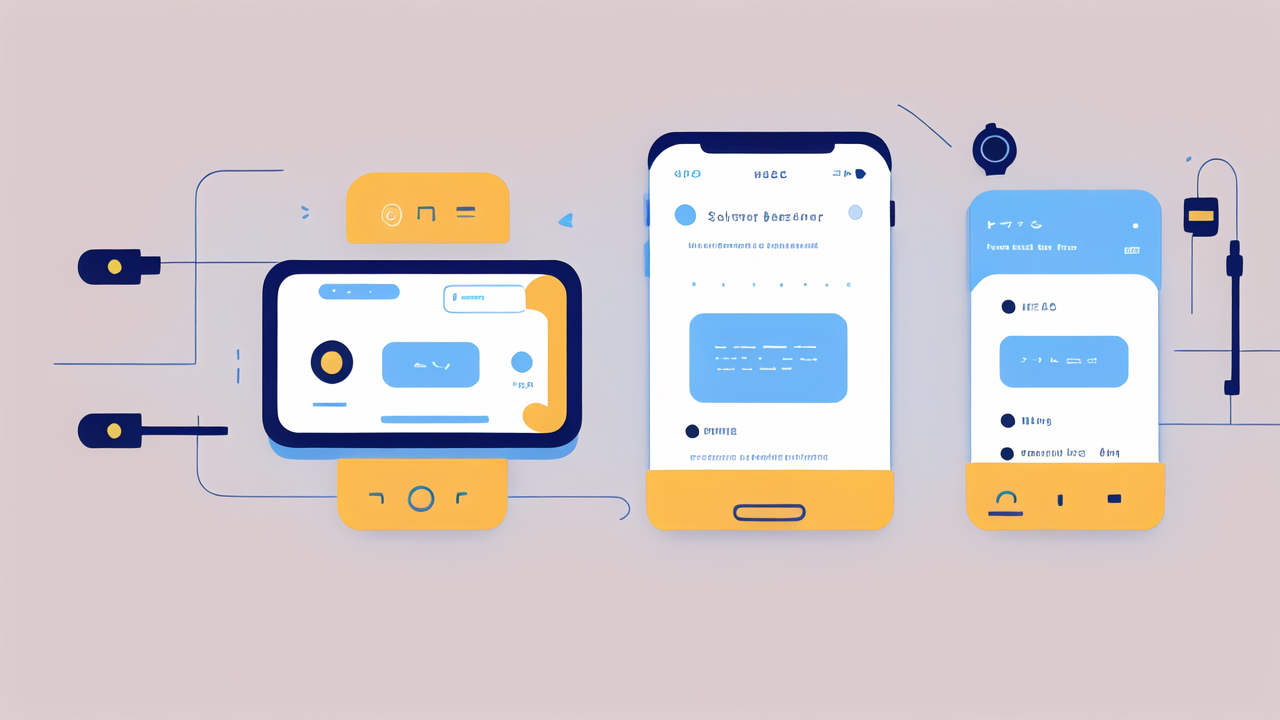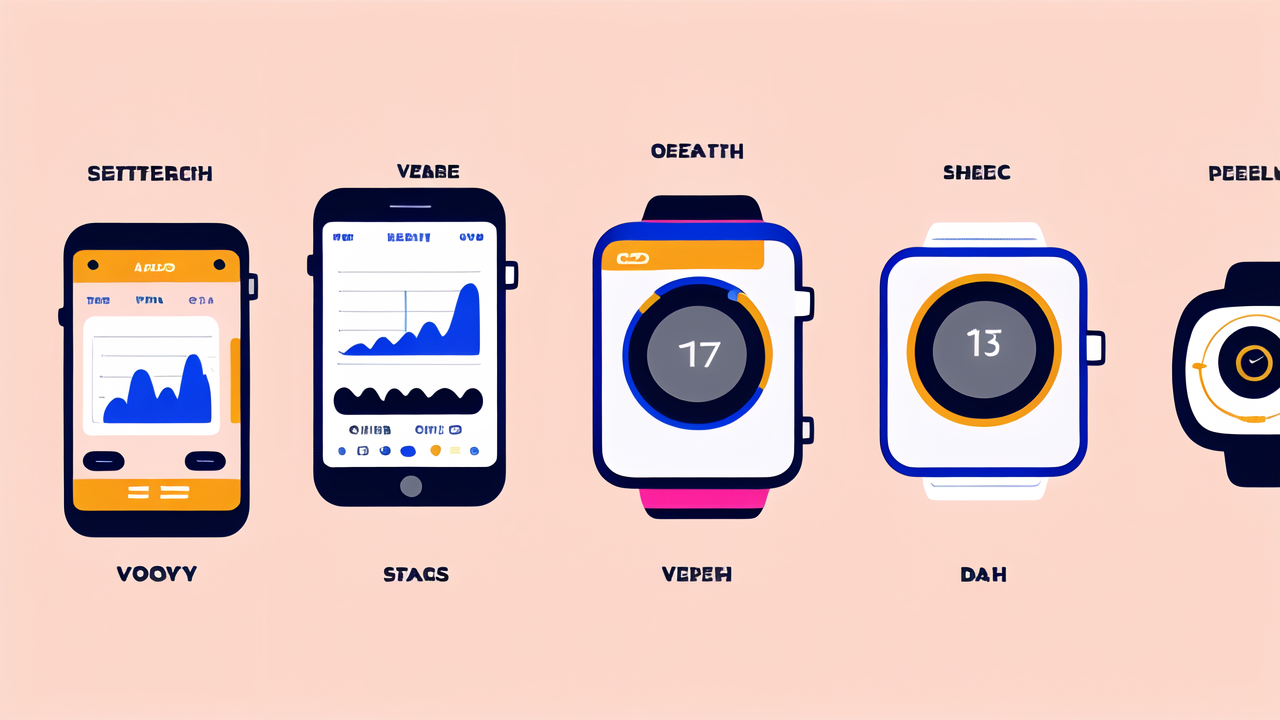The Evolution of Smartwatches: From Basic Trackers to High-End Performance
Understanding the Advancements in Wearable Technology
Smartwatches have come a long way since their early days. They started as simple fitness trackers. Now, they are powerful mini-computers on our wrists. The tech inside has grown by leaps and bounds. Today's watches can do so much more than just tell time.

These devices now have bright, clear screens. They can show detailed info at a glance. Many have touch controls for easy use. The materials used have also improved. Watches are now more durable and water-resistant. Some even look like stylish jewelry.
Sensors have gotten much better too. They can track more health data with greater accuracy. GPS is now common in smartwatches. This lets users map their runs or find directions easily.
The Impact of AI and Machine Learning on Smart Watches
AI and machine learning are changing the game for smartwatches. These tools make watches smarter and more helpful. They can learn from your habits and give personalized advice. This makes the watch feel like a true digital assistant.
AI helps watches understand voice commands better. You can talk to your watch to set reminders or send texts. Machine learning improves health tracking. It can spot patterns in your data and give health insights.
These smart features can even predict your needs. Your watch might suggest a workout based on your schedule. Or it could remind you to drink water if you haven't had enough. As AI grows, watches will become even more intuitive and useful.
Power Efficiency and Battery Life Innovations in Wearable Devices
Battery life is a big deal for smartwatches. No one wants to charge their watch every day. That's why power efficiency is a key focus for makers. New tech is helping watches last longer on a single charge.
Some watches now use low-power displays. These screens use less energy but still look great. Processors are getting more efficient too. They can do more work while using less power. Some watches even have solar charging. This lets them top up their battery using light.
Smart power management is another trick. Watches can turn off features when not in use. They might dim the screen when you're not looking at it. Or they could pause certain tracking when you're inactive. All these tweaks add up to longer battery life.
How Smart Watches are Transforming Health and Wellness
Integrating Advanced Health Metrics for Users
Smartwatches are becoming powerful health tools. They can track more than just steps and heart rate now. Many offer advanced health metrics. These give users a deeper look at their well-being.

Some watches can measure blood oxygen levels. This is useful for fitness and overall health. Others track skin temperature. This can help spot early signs of illness. Some even offer ECG readings. These can detect irregular heart rhythms.
Sleep tracking has also improved. Watches can now analyze sleep stages and quality. They might suggest ways to improve your sleep habits. All this data helps users take charge of their health.
The Role of Wearables in Personalized Healthcare
Wearables are changing how we approach healthcare. They provide constant health data. This helps both users and doctors make better decisions. Smartwatches can spot trends over time. This might catch health issues early.
Some watches can send alerts for unusual readings. This could be for high heart rates or low blood oxygen. Users can share this data with their doctors. It gives a more complete picture of their health.
Personalized health advice is another benefit. Watches can suggest lifestyle changes based on your data. They might remind you to move more or manage stress. This ongoing support can lead to better health outcomes.
Fitness and Workout Enhancements Through Smart Watches
For fitness fans, smartwatches are game-changers. They offer features that enhance workouts and training. Many watches have built-in workout modes. These track specific activities like running, swimming, or cycling.
GPS in watches helps map routes and track distances accurately. This is great for outdoor activities. Some watches can even detect what type of workout you're doing. They start tracking automatically.
Advanced metrics help users train smarter. Watches can measure things like VO2 max and recovery time. They might suggest when to push harder or when to rest. Some offer guided workouts right on your wrist.
Navigating the Smart Watch Market in the United States
Key Players and Market Trends in the US Wearable Tech Scene
The US smartwatch market is booming. Several big players dominate the scene. Apple leads with its Apple Watch series. They offer a seamless experience for iPhone users. Samsung is another major contender. Their Galaxy Watch line works well with Android phones.

Fitbit, now owned by Google, focuses on fitness-first watches. Garmin is popular among serious athletes. They offer rugged watches with long battery life. Fossil brings style to smartwatches. They blend fashion with tech.
Trends show users want more health features. Battery life is still a key selling point. There's also a growing demand for watches that look good. Many people want a watch that works for both fitness and fashion.
The Importance of Compatibility and Connectivity in Smart Watches
Compatibility is crucial when choosing a smartwatch. Most work best with certain phone types. Apple Watches, for example, only work with iPhones. Others are more flexible. They can pair with both iOS and Android devices.
Connectivity options are expanding. Many watches now offer cellular connections. This lets them work without a phone nearby. Wi-Fi is common too. It allows for app updates and data syncing.
Bluetooth is still key for connecting to phones and headphones. NFC in some watches enables contactless payments. The more connected a watch is, the more useful it becomes in daily life.
Regulatory Considerations for Wearable Tech Manufacturers
As smartwatches add more health features, regulations become important. In the US, the FDA oversees health-related tech. Some advanced features need FDA clearance. This ensures they are safe and accurate.
Data privacy is another big concern. Watches collect lots of personal info. Makers must follow laws like HIPAA for health data. They need strong security to protect user information.
There are also rules about wireless emissions. Watches must meet FCC standards. This makes sure they don't interfere with other devices. As watches get more advanced, staying compliant with these rules is crucial.




Leave a comment
This site is protected by hCaptcha and the hCaptcha Privacy Policy and Terms of Service apply.